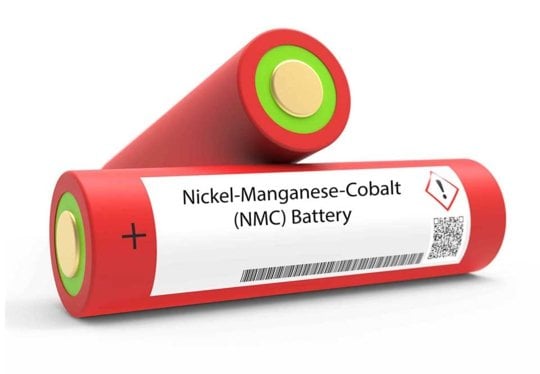In an era characterized by the relentless pursuit of sustainability and energy efficiency, lithium-ion batteries have emerged as the pivotal technology shaping our future. Among the multitude of lithium-ion battery variants, NMC (Nickel Manganese Cobalt) batteries have carved a niche for themselves due to their exceptional versatility, high energy density, and extended cycle life. This extensive article endeavors to provide a comprehensive understanding of NMC batteries, delving deep into their composition, nuanced advantages, potential drawbacks, and the multifaceted applications across various industries.
NMC batteries, as the name suggests, derive their identity from a cathode that elegantly blends Nickel (N), Manganese (M), and Cobalt (C). The numeric suffix following the NMC label (e.g., NMC 111, NMC 532) represents the proportion of these elements in the cathode. For instance, NMC 111 boasts a cathode consisting of equal parts nickel, manganese, and cobalt, while NMC 532 embodies a composition of five parts nickel, three parts manganese, and two parts cobalt.
The cathode, one of the pivotal components in a lithium-ion battery, exerts a profound influence on the battery's performance. Within NMC batteries, the intricate interplay between nickel, manganese, and cobalt is paramount. Nickel contributes to energy density, manganese stabilizes the voltage at a high level, and cobalt ensures thermal stability. This harmonious synergy results in a cathode that embodies extraordinary stability and unparalleled energy storage capabilities.

NMC batteries come laden with an array of benefits that set them apart as a preferred choice in the battery domain:
NMC batteries have stamped their authority across an extensive spectrum of industries:
NMC batteries occupy the vanguard of the electric vehicle (EV) revolution. Their high energy density, coupled with an extensive cycle life, is pivotal in delivering the requisite power for propelling electric vehicles efficiently. Prominent automakers such as Tesla have wholeheartedly embraced NMC batteries, thereby significantly extending the range and enhancing the performance of their EVs.
NMC batteries have transgressed the boundaries of conventional battery applications to establish themselves as the powerhouses behind everyday consumer devices. From ubiquitous smartphones to ubiquitous laptops and tablets, their compact size, staggering energy density, and extended cycle life make them the perfect choice for powering these omnipresent gadgets, ensuring that we remain interconnected and productive.
As the prevalence of renewable energy sources, such as solar and wind power, continues to ascend, energy storage solutions are becoming indispensable. The intermittent nature of renewable energy necessitates a robust and reliable means of storing excess energy during periods of peak production and discharging it when required. NMC batteries, with their superb energy storage capabilities, are at the forefront of the energy storage systems (ESS) used in renewable energy applications.
Modern electricity distribution systems rely heavily on grid energy storage for improved efficiency and reliability. NMC batteries play an instrumental role in storing surplus electricity during periods of low demand and releasing it during peak hours, thereby stabilizing the grid and reducing the strain on conventional power plants. This feature is pivotal in ushering in a more efficient and dependable electricity supply system.
NMC batteries have transcended the boundaries of our planet and ventured into the realms of aerospace applications. These batteries power essential systems in satellites and electric aircraft, where safety, energy density, and reliability assume paramount importance. Their role in enabling space exploration and pioneering innovative forms of air travel is indispensable.
Notwithstanding their myriad advantages, NMC batteries are not bereft of challenges. One of the foremost concerns revolves around the sustainability of cobalt sourcing. Cobalt, an essential component in NMC batteries, is a finite resource, and its extraction can have adverse environmental and social implications. Researchers and manufacturers are actively exploring cobalt-free NMC formulations, such as NMC 811 (consisting of 1 part nickel, 1 part manganese, and 1 part cobalt), which simultaneously address supply chain concerns and bolster safety.
Another challenge pertains to recycling and disposal. The proper disposal and recycling of lithium-ion batteries, including NMC batteries, are imperative to minimize environmental impact and recover valuable materials. Developing more efficient recycling methods and increasing awareness about the necessity of proper disposal is paramount in tackling this issue.
In the realm of future developments, ongoing research and innovation seek to propel NMC batteries to greater heights. These endeavors encompass elevating energy density, enhancing safety measures, and reducing overall costs. Moreover, the advancement of solid-state battery technology holds immense potential to revolutionize NMC batteries, potentially leading to heightened performance, extended longevity, and reduced environmental impact.
NMC batteries represent a momentous milestone in the evolutionary trajectory of lithium-ion battery technology. Their harmonious composition of nickel, manganese, and cobalt encapsulates a versatile solution for a vast array of applications across diverse industries. As the world hurtles toward electrification, renewable energy integration, and sustainable transportation, NMC batteries are poised to take on an increasingly pivotal role. With relentless research and innovation, the trajectory of NMC batteries promises an evolution marked by enhanced performance, heightened safety, and heightened sustainability.
Whether powering electric vehicles, facilitating renewable energy storage, or energizing portable electronics, NMC batteries encapsulate the promise of a cleaner, more energy-efficient world. They stand as a testament to our collective commitment to ushering in a future that is not only environmentally responsible but also sustainable. The evolution of NMC batteries continues to be a beacon guiding us toward a world where sustainable energy storage is the cornerstone of a brighter and greener future.